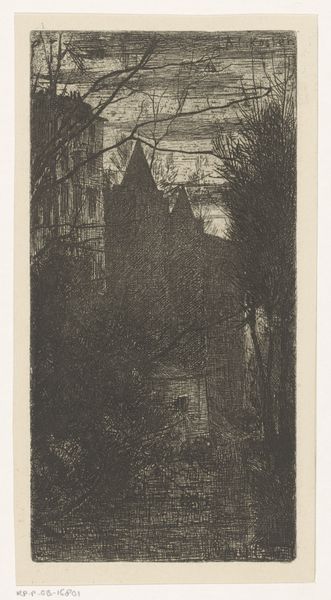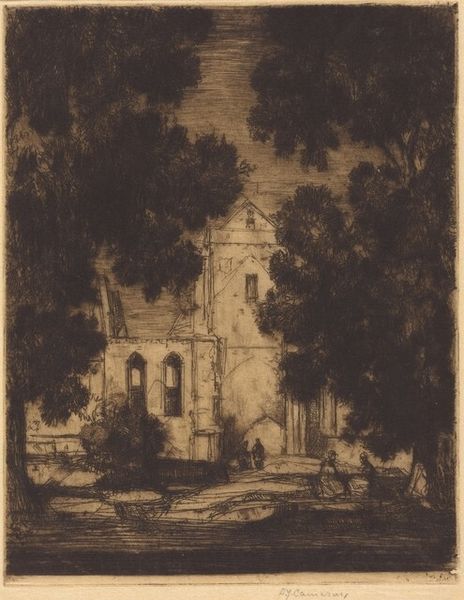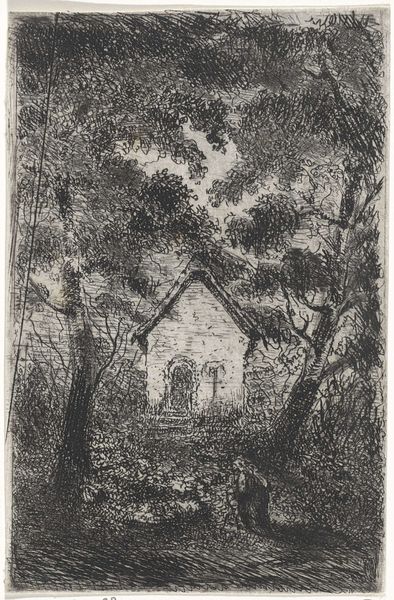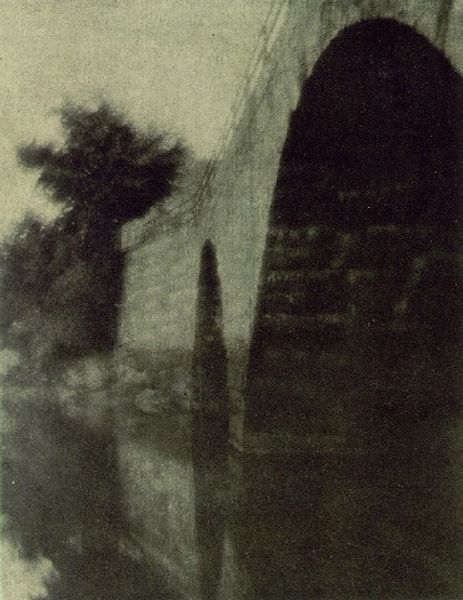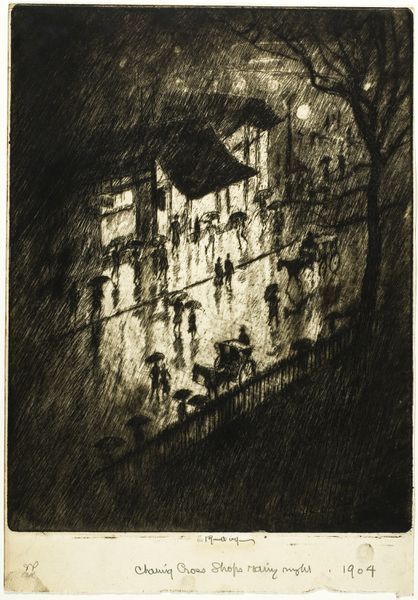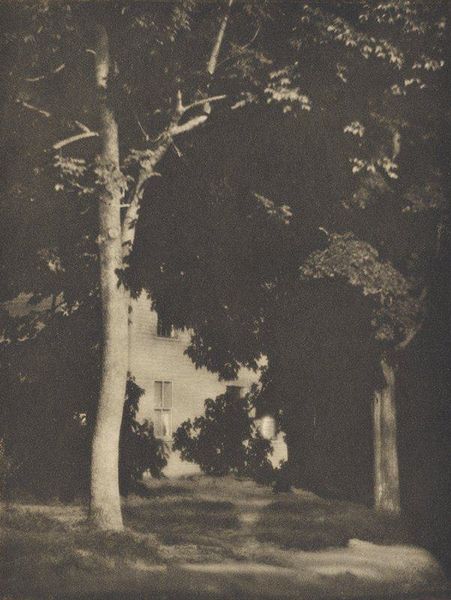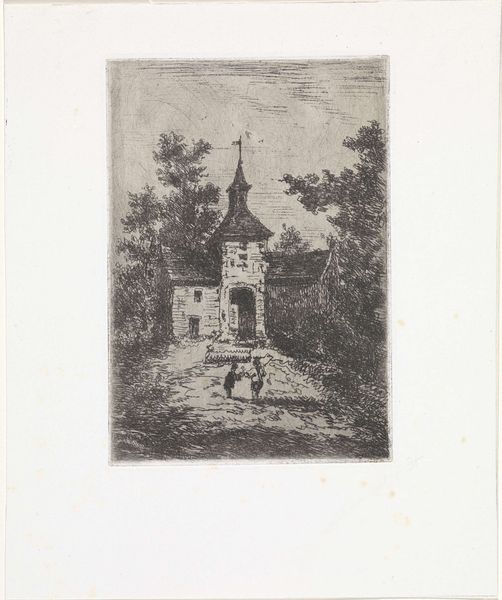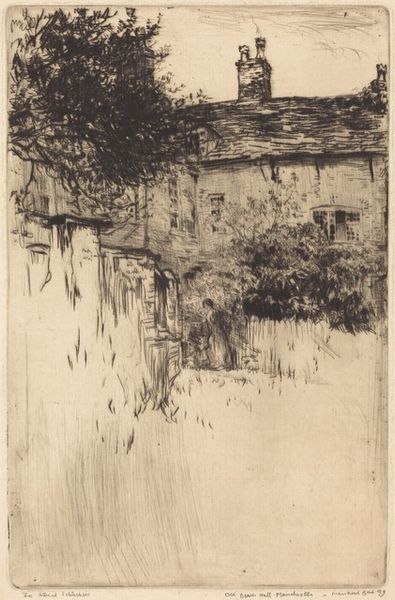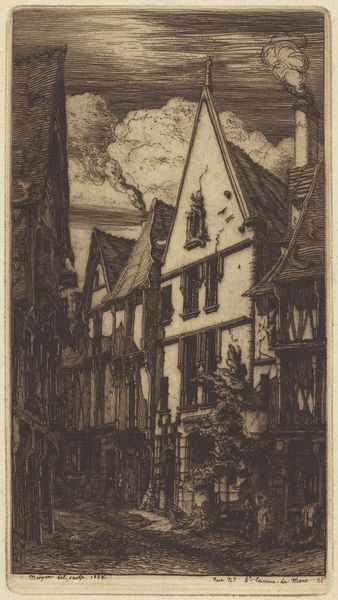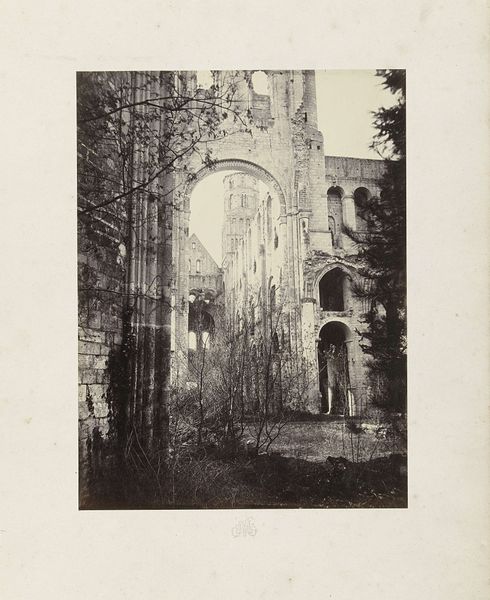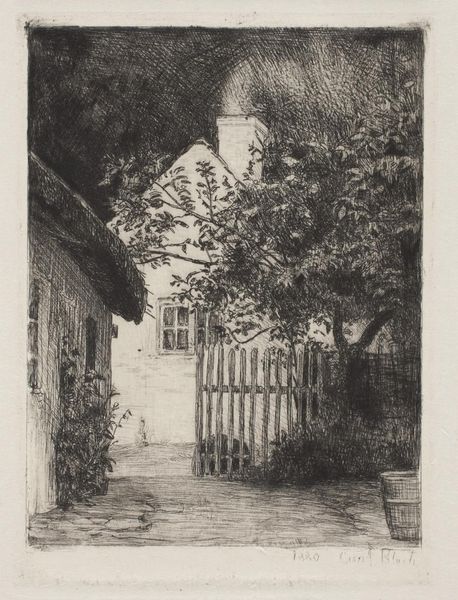
Copyright: National Gallery of Art: CC0 1.0
Curator: This intaglio print, an etching titled "Rowallan's Towers," was completed by David Young Cameron in 1893. What's your initial reaction? Editor: A certain gloom pervades, doesn’t it? The somber hues really set a melancholic tone, even before considering the subject matter. The strong contrast is interesting, a kind of chiaroscuro effect with the dark foreground and the glow in the archway. Curator: It's evocative, certainly. Beyond its aesthetic qualities, consider the social context. Cameron created this during a time of intense industrial change in Scotland. The romanticized view of castles offered an escape, a harkening back to a perceived simpler, perhaps nobler, past. How does that affect your reading of it? Editor: It's clever to position the castle as a refuge, an escape from modernity, though formally I still see the architectural massing and play of light as dominant elements. The dark, almost impenetrable foreground is a screen—a curtain pulled back slightly to reveal a tantalizing glow. Curator: The etching technique, allowing for such precise detail, reinforces this sense of idealized history. The figure on the right, almost spectral, embodies that past, frozen in time. It evokes reflections on Scottish identity, the legacy of the clans and the feudal system—histories layered with both pride and oppression. Editor: Indeed, the figure anchors the composition vertically, echoing the towers while also disrupting the horizontal thrust of the gate. Looking closely, there's a complex interplay of line and shadow that contributes to the emotional tension, regardless of any specific historical interpretation. Curator: I think, viewed from a post-colonial lens, the towers can also represent power structures. This grandeur often overshadows the lives and experiences of the marginalized. Remembering who these structures were actually for—and against—offers us another layer to consider when confronting such a seemingly simple landscape. Editor: I appreciate how your reading weaves those layers of historical narrative. It underscores how the artist chose, for example, this low angle—creating a feeling of aspiration to the monument above. For me, though, ultimately the masterful gradations of tone and controlled, rhythmic line-work is the key here. Curator: So, a conversation, then, between formal beauty and complex cultural histories—as every worthwhile artwork invites! Editor: Precisely. And it keeps unfolding the more we look, which is ultimately the mark of a strong image, irrespective of historical narrative.
Comments
No comments
Be the first to comment and join the conversation on the ultimate creative platform.
